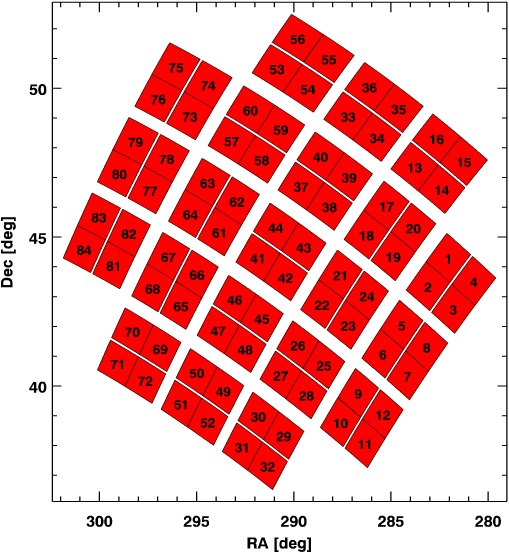Full Frame Image (FFI) Display
This tool enables you to browse the Kepler field of view
using the currently available FFI and FFI Uncertainty images,
and to identify specific objects
observed by GALEX, SDSS, and 2MASS in the Kepler field,
as well as Kepler objects for which data are now public, "dropped," or published.
The timestamp in the FFI file names are
in the format yyyydddhhmmss, where ddd refers to Day of Year (for example,
114 = April 24 UTC), and times refer to the end of the exposure.
See the README.txt file in the FFI
ftp directory for more information on the WCS corrections.
Because the spacecraft rotates 90 degrees each quarter
(clockwise in the image below),
objects will appear in four different CCD channels.
For example, in the image below representing the detector
position in quarter 1,
a target in channel 1 will appear sequentially in channels 53, 81, and
29, before returning to channel 1 in quarter 5.
For FFIs delivered before Oct. 2011, we recommend using SAOImage ds9 to
correctly display the
celestial coordinate system. Outdated WCS keywords exist in the FFI
headers that cause some FITS viewers, eg. Gaia and Skycat, to display the
wrong coordinates. The problem has been remedied in all FFIs delivered after
Sep. 31, 2011. More recently, all the FFIs were
reprocessed to include a one minute barycentric time correction.
The corrected files were made available online at MAST in June, 2013.
FFIs were once again reprocessed (with improved WCS values) as part
of Data Release 24. The new files replaced the previous online versions on June 2, 2015.





 Follow Us
Follow Us